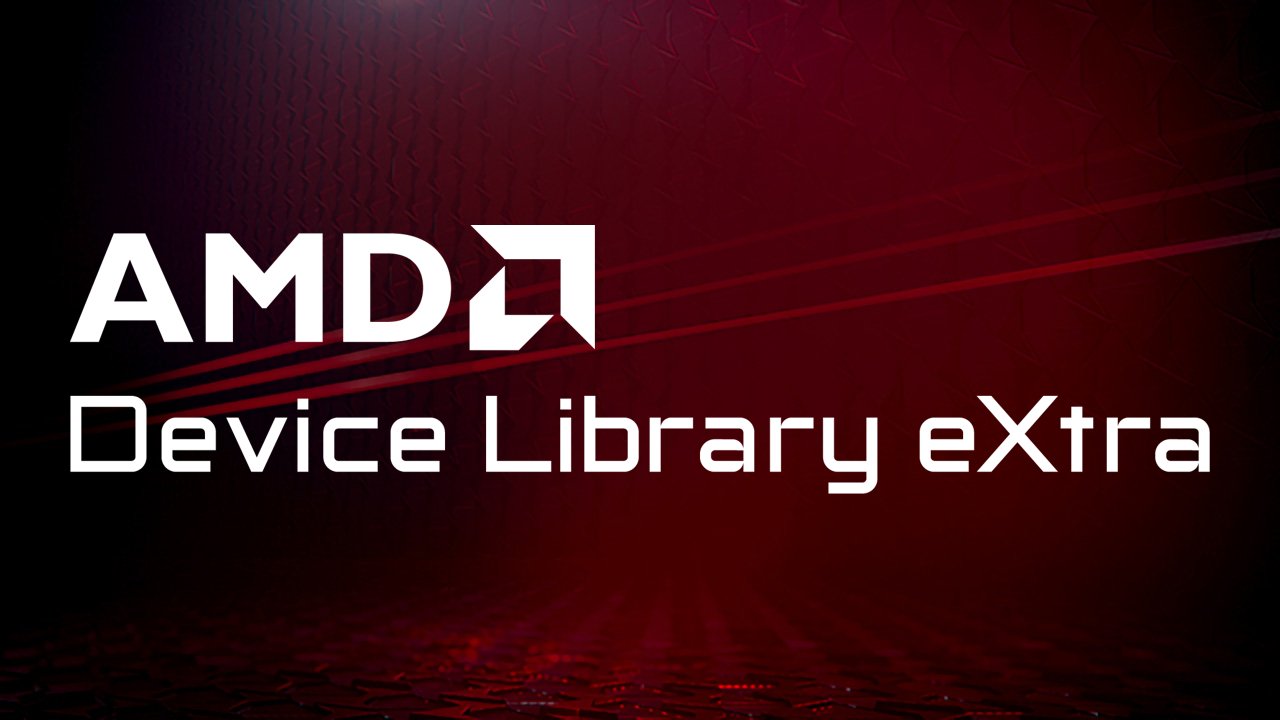DisplayDynamicRefreshRateControl
Demonstrates how to obtain Display Dynamic Refresh Rate Control when programming with ADLX and perform related operations.
Command Prompts
| Command Prompt | Description |
|---|---|
| 1 | Show Dynamic Refresh Rate Control support |
| 2 | Get Dynamic Refresh Rate Control state |
| 3 | Set Dynamic Refresh Rate Control state enabled |
| 4 | Set Dynamic Refresh Rate Control state disabled |
| M/m | Display the command prompt menu. |
| Q/q | Terminate the application. |
Sample Path
/Samples/CPP/Display/DisplayDynamicRefreshRateControl
Code
//
// Copyright (c) 2021 - 2025 Advanced Micro Devices, Inc. All rights reserved.
//
//-------------------------------------------------------------------------------------------------
#include "SDK/ADLXHelper/Windows/Cpp/ADLXHelper.h"
#include "SDK/Include/IDisplaySettings.h"
#include "SDK/Include/IDisplays.h"
#include "SDK/Include/IDisplays3.h"
#include <iostream>
#include <string>
#include <thread>
// Use ADLX namespace
using namespace adlx;
// ADLXHelper instance
// No outstanding interfaces from ADLX must exist when ADLX is destoryed.
// so we use global variables to ensure the validity of the interface.
static ADLXHelper g_ADLXHelp;
// thread quit event
static HANDLE quitEvent = nullptr;
// thread quit flag
static std::atomic<bool> g_quit = false;
// thread for timeout
static std::thread* g_thread = nullptr;
// Show Dynamic Refresh Rate Control Support
void ShowDynamicRefreshRateControlSupport(const IADLXDisplayServices3Ptr& displayService3, const IADLXDisplayPtr& display);
// Get current Dynamic Refresh Rate Control state
void GetDynamicRefreshRateControlState(const IADLXDisplayServices3Ptr& displayService3, const IADLXDisplayPtr& display);
// Set Dynamic Refresh Rate Control
void SetDynamicRefreshRateControlState(const IADLXDisplayServices3Ptr& displayService3, const IADLXDisplayPtr& display, const int key);
// Main menu
void MainMenu();
// Menu action control
void MenuControl(const IADLXDisplayServices3Ptr& displayService3, const IADLXDisplayPtr& display);
// Wait for exit with error message
int WaitAndExit(const char* msg, const int retCode);
int main()
{
// Define return code
ADLX_RESULT res = ADLX_FAIL ;
// Initialize ADLX
res = g_ADLXHelp.Initialize();
if (ADLX_SUCCEEDED (res))
{
// Get display service
IADLXDisplayServicesPtr displayService;
res = g_ADLXHelp.GetSystemServices()->GetDisplaysServices(&displayService);
if (ADLX_SUCCEEDED (res))
{
IADLXDisplayServices3Ptr displayServices3(displayService);
if (nullptr != displayServices3)
{
// Get display list
IADLXDisplayListPtr displayList;
res = displayServices3->GetDisplays(&displayList);
if (ADLX_FAILED (res))
{
std::cout << "Failed to get the display list: " << res << std::endl;
goto EXIT;
}
// Inspect for the first display in the list
adlx_uint it = 0;
IADLXDisplayPtr display;
res = displayList->At(it, &display);
if (ADLX_SUCCEEDED (res))
{
// Display main menu options
MainMenu();
// Get and parse the selection
MenuControl(displayServices3, display);
}
}
}
else
{
std::cout << "Failed to get the display services: " << res << std::endl;
}
}
else
{
return WaitAndExit("ADLX initialization failed", 0);
}
EXIT:
// Destroy ADLX
res = g_ADLXHelp.Terminate();
std::cout << "Destroy ADLX result: " << res << std::endl;
// Pause to see the print out
system("Pause");
return 0;
}
void ShowDynamicRefreshRateControlSupport(const IADLXDisplayServices3Ptr& displayService3, const IADLXDisplayPtr& display)
{
IADLXDisplayDynamicRefreshRateControlPtr displayDynamicRefreshRateControl;
ADLX_RESULT res = displayService3->GetDynamicRefreshRateControl(display, &displayDynamicRefreshRateControl);
if (ADLX_SUCCEEDED (res))
{
std::cout << " === Get display dynamic refresh rate control supported status ===" << std::endl;
adlx_bool supported = false;
res = displayDynamicRefreshRateControl->IsSupported(&supported);
std::cout << "\\tIsSupported, res " << res << ", supported: " << supported << std::endl;
}
}
void GetDynamicRefreshRateControlState(const IADLXDisplayServices3Ptr& displayService3, const IADLXDisplayPtr& display)
{
IADLXDisplayDynamicRefreshRateControlPtr displayDynamicRefreshRateControl;
ADLX_RESULT res = displayService3->GetDynamicRefreshRateControl(display, &displayDynamicRefreshRateControl);
if (ADLX_SUCCEEDED (res))
{
std::cout << " === Get display dynamic refresh rate control enabled ===" << std::endl;
adlx_bool enabled = false;
res = displayDynamicRefreshRateControl->IsEnabled(&enabled);
std::cout << "\\tGetEnabled, result: " << res << " enabled: " << (enabled ? "true" : "false") << std::endl;
}
}
void SetDynamicRefreshRateControlState(const IADLXDisplayServices3Ptr& displayService3, const IADLXDisplayPtr& display, const int key)
{
IADLXDisplayDynamicRefreshRateControlPtr displayDynamicRefreshRateControl;
ADLX_RESULT res = displayService3->GetDynamicRefreshRateControl(display, &displayDynamicRefreshRateControl);
if (ADLX_SUCCEEDED (res))
{
ADLX_RESULT res = ADLX_FAIL ;
switch (key)
{
// Set Dynamic Refresh Rate Control disabled
case 0:
std::cout << " === Set Dynamic Refresh Rate Control enabled: false" << std::endl;
res = displayDynamicRefreshRateControl->SetEnabled(false);
break;
// Set Dynamic Refresh Rate Control enabled
case 1:
std::cout << " === Set Dynamic Refresh Rate Control enabled: true" << std::endl;
res = displayDynamicRefreshRateControl->SetEnabled(true);
break;
default:
break;
}
std::cout << "\\tReturn code is: " << res << " (0 means success)" << std::endl;
}
}
void MainMenu()
{
std::cout << "\\tChoose from the following options:" << std::endl;
std::cout << "\\t->Press 1 to Dynamic Refresh Rate Control support" << std::endl;
std::cout << "\\t->Press 2 to get Dynamic Refresh Rate Control state" << std::endl;
std::cout << "\\t->Press 3 to set Dynamic Refresh Rate Control state enabled" << std::endl;
std::cout << "\\t->Press 4 to set Dynamic Refresh Rate Control state disabled" << std::endl;
std::cout << "\\t->Press Q/q to terminate the application" << std::endl;
std::cout << "\\t->Press M/m to display main menu options" << std::endl;
}
// Menu action control
void MenuControl(const IADLXDisplayServices3Ptr& displayService3, const IADLXDisplayPtr& display)
{
int num = 0;
while ((num = getchar()) != 'q' && num != 'Q')
{
switch (num)
{
// Show Dynamic Refresh Rate Control support
case '1':
ShowDynamicRefreshRateControlSupport(displayService3, display);
break;
// Display current Dynamic Refresh Rate Control state
case '2':
GetDynamicRefreshRateControlState(displayService3, display);
break;
// Set Dynamic Refresh Rate Control state
case '3':
case '4':
SetDynamicRefreshRateControlState(displayService3, display, num - '3');
break;
// Display main menu options
case 'm':
case 'M':
MainMenu();
break;
default:
break;
}
}
}
// Wait for exit with error message
int WaitAndExit(const char* msg, const int retCode)
{
// Printout the message and pause to see it before returning the desired code
if (nullptr != msg)
std::cout << msg << std::endl;
system("Pause");
return retCode;
}













